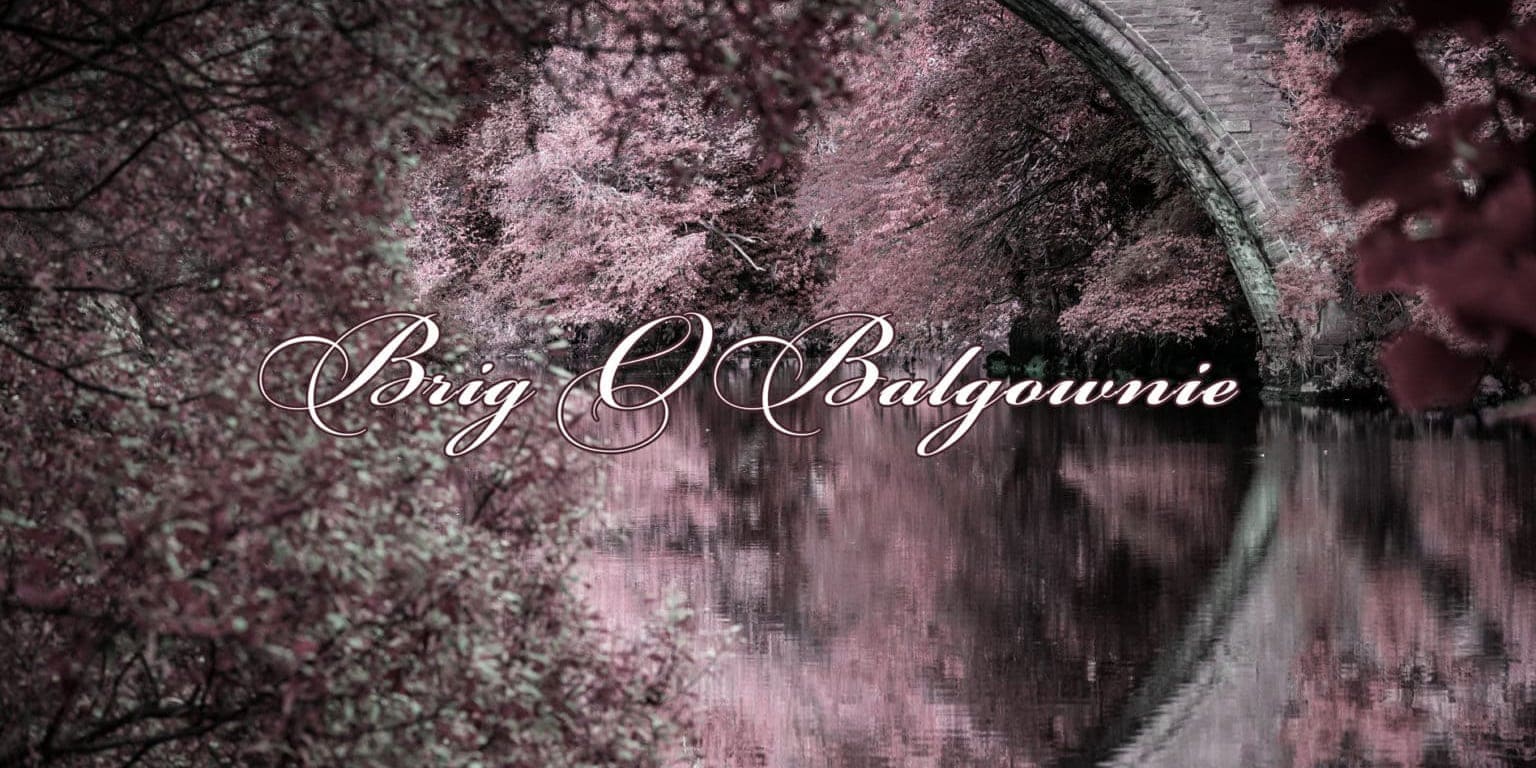Explore Scotland’s oldest medieval bridge, the Brig of Balgownie.
Stepping onto its arch feels like walking through a portal to medieval Scotland. Surrounded by leafy trees and wooded banks, the slow-moving River Don flows beneath the bridge. Now closed to traffic, its Victorian-style lamp posts and breathtaking views evoke a bygone era.
Nestled in Aberdeen’s historic district, the Brig of Balgownie charmed us with its unexpected allure. Numerous paths lead to this serene spot, making it a must-visit destination. This was one of our favourite places to visit in Aberdeen.
Join us as we delve into the history and beauty of this hidden gem, where each stone tells a story and the river whispers secrets of the past.

Brig O Balgownie Map
How to Use This Map
- To use this interactive map effectively, click the square icon in the upper right corner to expand.
- A key will appear on the left, guiding you through various locations.
Brig O Balgownie’s Appeal
The Bridge of Balgownie is a charming piece of ancient history in the old part of Aberdeen. But its location gives it an extra appeal. It’s surrounded by mature trees along the banks of the River Don and attracts a variety of wildlife.
A tree-lined path beside a river has to be one of nature’s best sedatives, and the Brig O Balgownie delivers in bucketloads.
Many cultures have a name for getting outside and enjoying nature. The Nordic word for enjoying the great outdoors is friluftsliv, and shinrin-yoku in Japan means forest-bathing. The area here is perfect for a refreshing spot of forest bathing.
You may spot seals and otters in and around the shady banks, along with many water birds. We even saw a couple of deer grazing on the island between the Balgownie Bridge and the Bridge of Don.
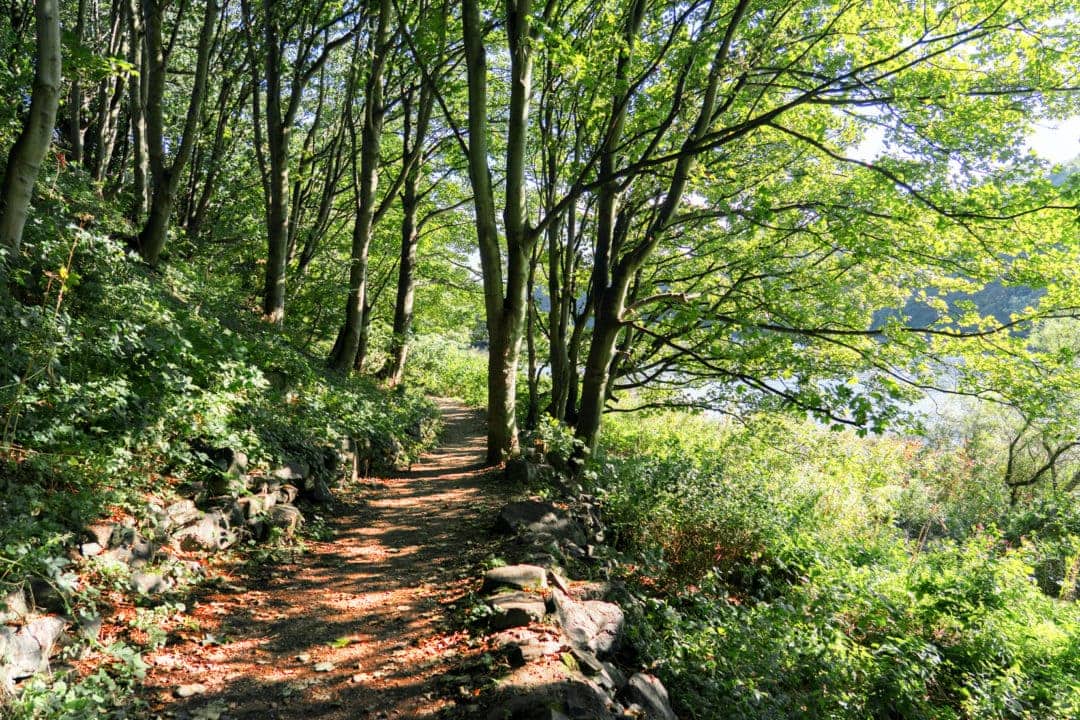

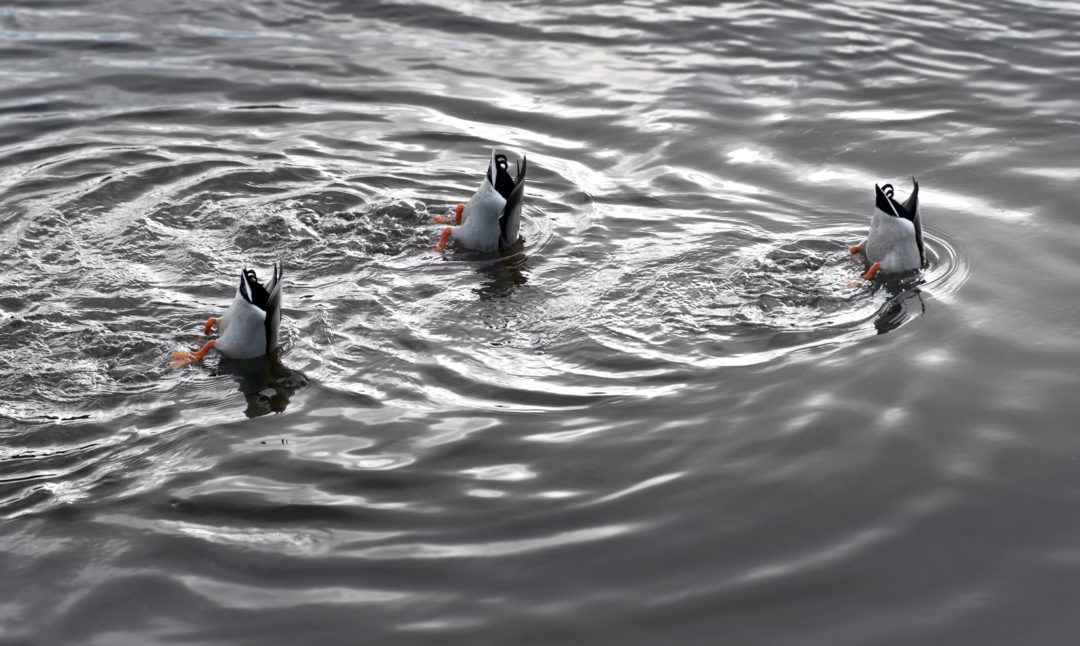
The Black Neuk
The deep pool of water under the Brig O Balgownie is known as the Black Neuk. Neuk means a nook or corner in Scottish.
Locals have been jumping off the bridge into the black waters below for centuries. With Aberdeen being a university town, it is no surprise that university students often jump from the bridge for fun.
However, a sign on the bridge warns against jumping due to possible changes in the river’s depth.
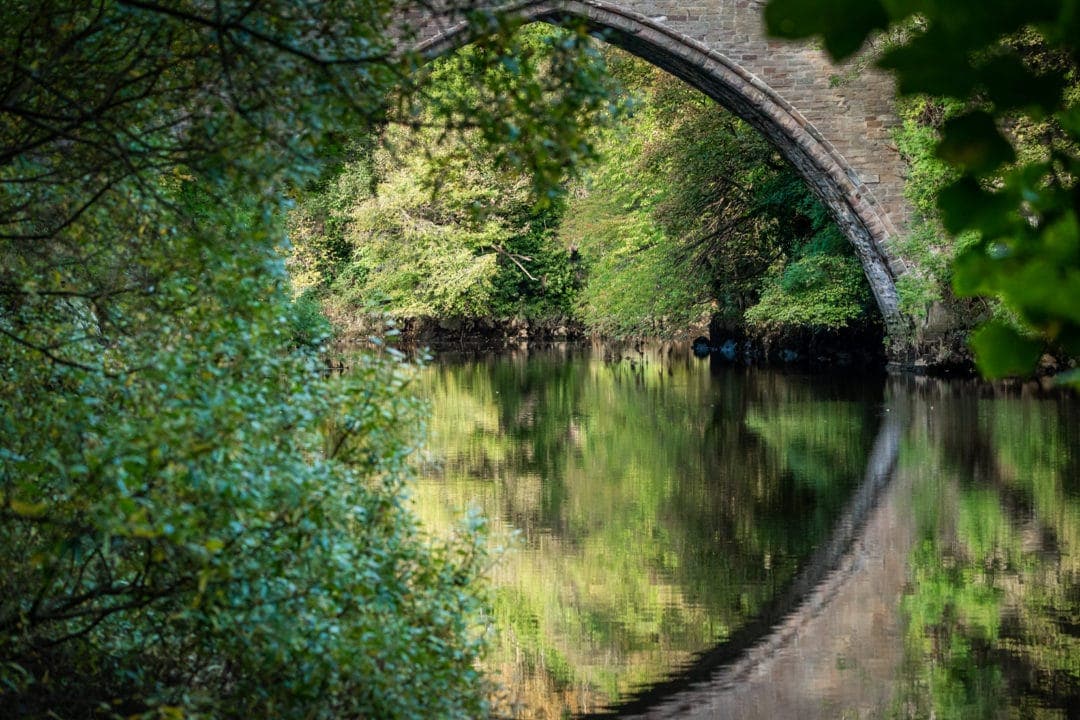
About Brig O Balgownie
Constructed in the 13th century, the Brig O Balgownie, initially called the Bridge of Don, was the primary bridge linking Aberdeen to northern regions across the River Don.
Its strategic position made it a vital trade route and a key passageway for military movements along the East Coast.
In 1831, a new structure, the Bridge of Don, was erected 500 metres east of the original. Now, the historic Brig O Balgownie is recognized as a Scheduled Ancient Monument.
Richard Cementarius, the King’s Master Mason and Alderman of Aberdeen in 1272, is credited with constructing the bridge. He is also linked to the design of Drum Castle’s Tower House, the oldest of its kind in Scotland.
The plaque on the bridge of Balgownie reads:
This bridge, one of the oldest in Britain, was completed about 1320 supposedly at the behest of King Robert the Bruce. It has a gothic shaped arch with a clear span of some 12 metres and is built of a mixture of sandstone and granite. In 1605 it was almost totally rebuilt by the town council and at the same time a fund was established for its maintenance in perpetuity by Sir Alexander Hay of Whytburgh and Newton.
The Bridge is a scheduled ancient monument.
Anno Domini 1981
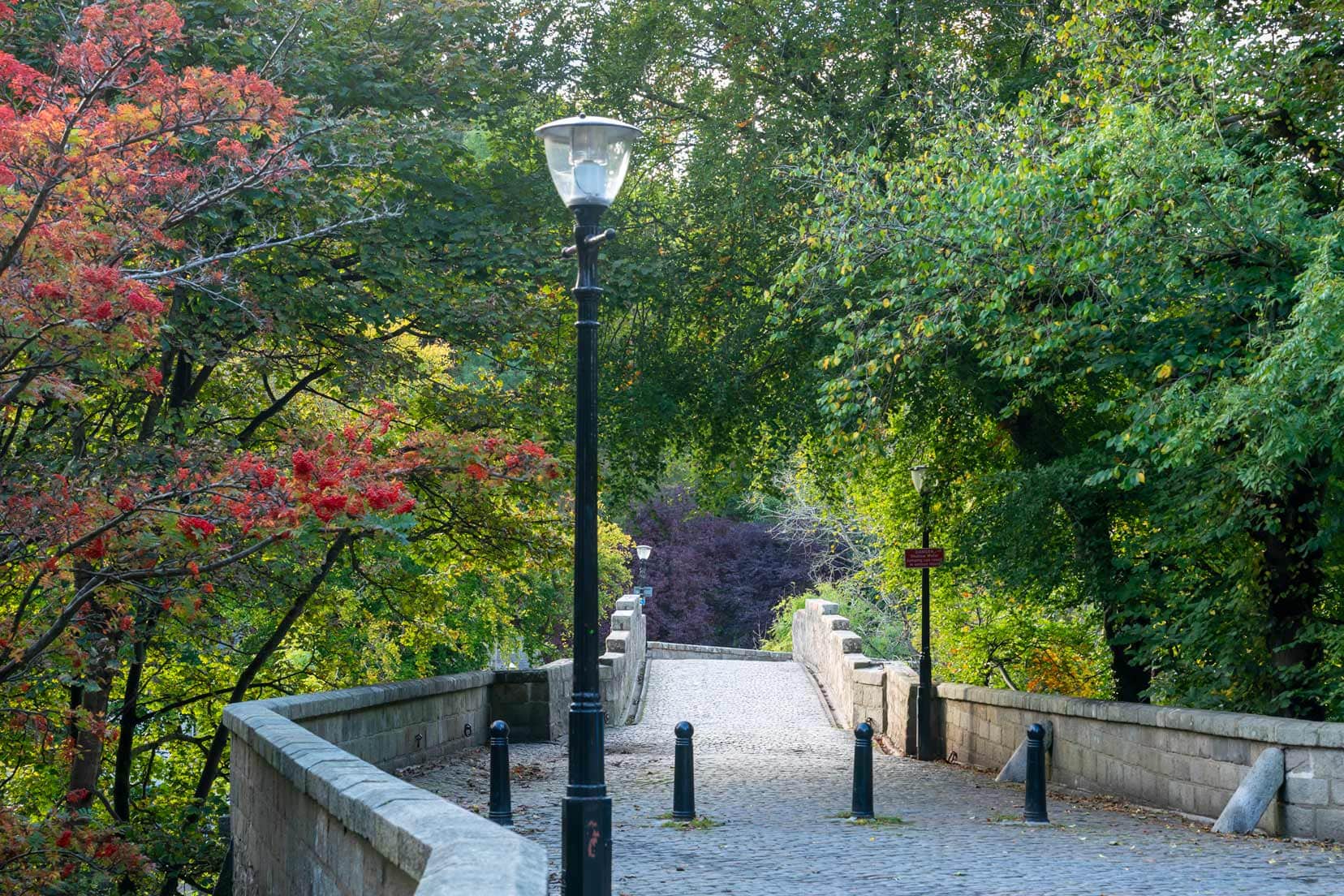
So, the Bridge was supposedly built at the request of Robert the Bruce. This fact alone makes the Brig O Balgownie a little bit more special. This is because Robert the Bruce is somewhat of a National Hero in Scotland.
His name and statues of him pop up all over the place. In case your history is like mine and a little lacking regarding who’s who in Scottish days of old, here’s a condensed lowdown on Robert the Bruce.
Who was Robert The Bruce?
Early Life and Background
- Name: Robert I, known as Robert the Bruce.
- Born: 1274; died 1329.
- Heritage: Came from a noble Scottish family.
Rise to Power
- 1296: The English invaded Scotland, initiating the First War of Scottish Independence.
- 1306: After a series of battles with rivals in Scotland and England, Robert killed his main rival and declared himself King of Scotland.
Struggle for Independence
- English Resistance: Both Edward I and later Edward II of England contested his rule, insisting Scotland remained under English control.
- 1314: Robert’s forces achieved a significant victory at the Battle of Bannockburn, reasserting the Scottish monarchy’s legitimacy.
- 1320: Scots petitioned the Pope, asserting Robert’s right as the monarch, receiving papal recognition in 1324.
Final Years and Legacy
- 1327: Amidst political turmoil, Edward II was deposed, passing the crown to his son, Edward III.
- 1328: The Treaty of Edinburgh-Northampton was signed, acknowledging Scotland’s independence and confirming Robert and his descendants as rightful rulers.
- Aftermath: Robert’s reign set the foundations for the future of the Scottish monarchy, though challenges continued beyond his death.
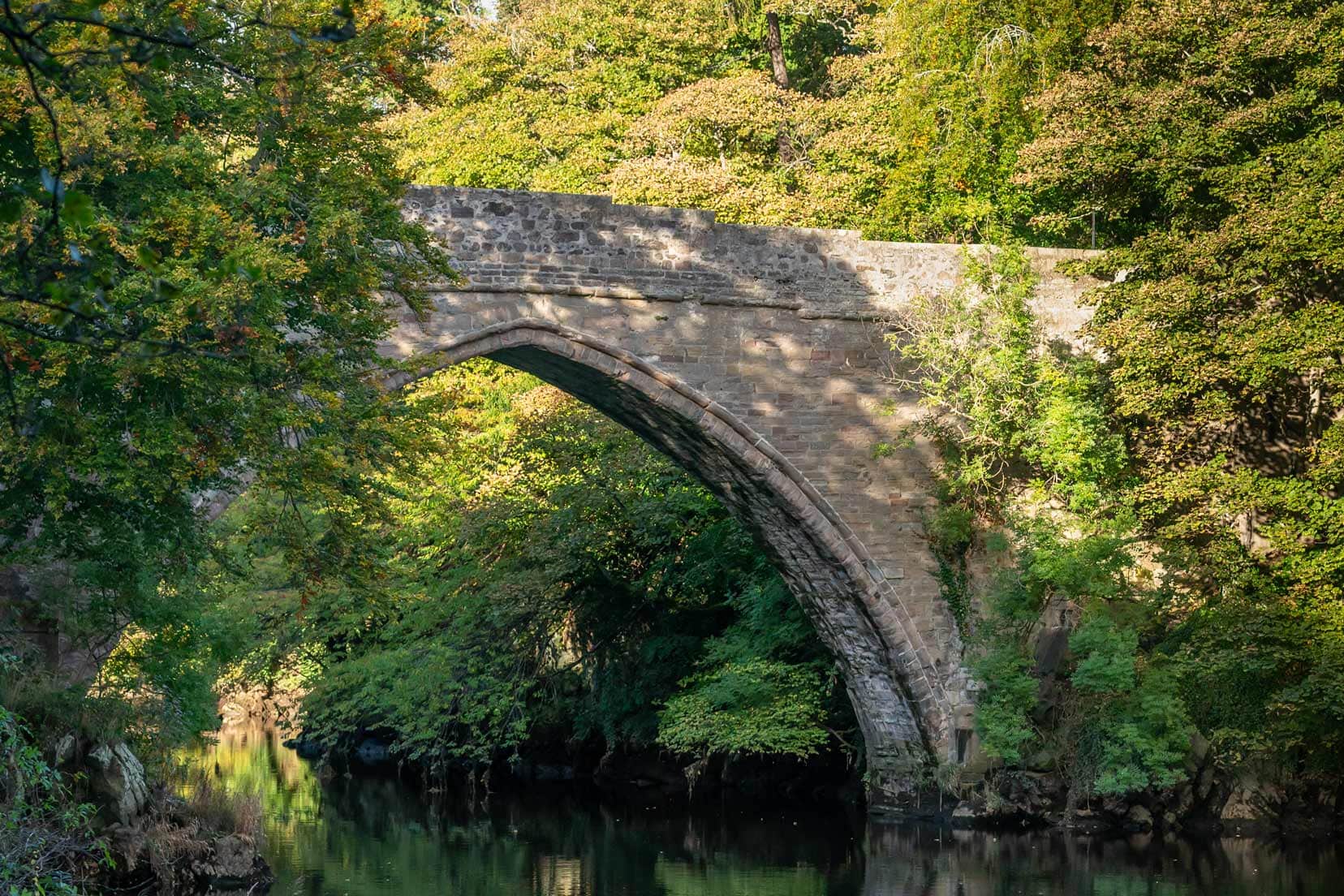
Planning a Trip to Scotland?
- 🚗 Hiring a car? We recommend getting a quote from DiscoverCars
- 🚐 Hiring a campervan? We recommend Motorhome Republic
- ⛑ Arranged your travel insurance? Compare quotes from World Nomads & Safetywing
- 🪪 Order your International Driver’s Licence online here
- 🏩 Booked your accommodation? We use Booking.com to find the best deals
- 🐾 Is someone pet-sitting for you? 🐾 We use and love TrustedHousesitters
- (Get 25% off at checkout for new memberships with our discount code: LIFEJOURNEY25)
Brig O Balgownie Inspiration
However, the connection to Robert the Bruce isn’t the only claim that Brig O Balgownie has when it comes to historical celebrities.
The Balgownie Bridge is featured in the poem ‘Don Juan’ by the well-known poet Lord Byron (1788-1824). Byron was born in England but spent much of his childhood raised by his Scottish mother in Aberdeen.
The poem of Don Juan (which was still unfinished when Byron died), has 16,000 lines — yes quite the epic poem.
Balgownie gets a mention in this verse:
“As ‘Auld Lang Syne’ brings Scotland, one and all,
Lord Byron
Scotch plaids, Scotch snoods, the blue hills, and clear streams,
The Dee, the Don, Balgownie’s brig’s black wall,
All my boy feelings, all my gentler dreams
Of what I then dreamt, clothed in their own pall,
Like Banquo’s offspring; – floating past me seems
My childhood in this childishness of mine:
I care not – ’tis a glimpse of ‘Auld Lang Syne.‘”
VIDEO: Professional Bridge Divers Jumping from The Brig O Balgownie
The individuals involved here are professional jumpers, the Doveys. Divers inspect the jumping site and the depth of water, and trained lifesavers watch from the banks during filming to ensure the safety of the jumpers.
Cottown of Balgownie
The Cottown of Balgownie, a row of late 18th-century terraced industry worker’s cottages, leads towards the bridge on the eastern side.
They reminded us of the chocolate-box cottages of the Cotswolds. Flowers festoon their compact front gardens, adding to their picturesque appearance. It is, therefore, no wonder that the Brig O Balgownie cottages are Scottish Heritage-listed buildings.
To find out more about this area and to read the stories and memories of locals from the 1920s onwards, have a read of this booklet.
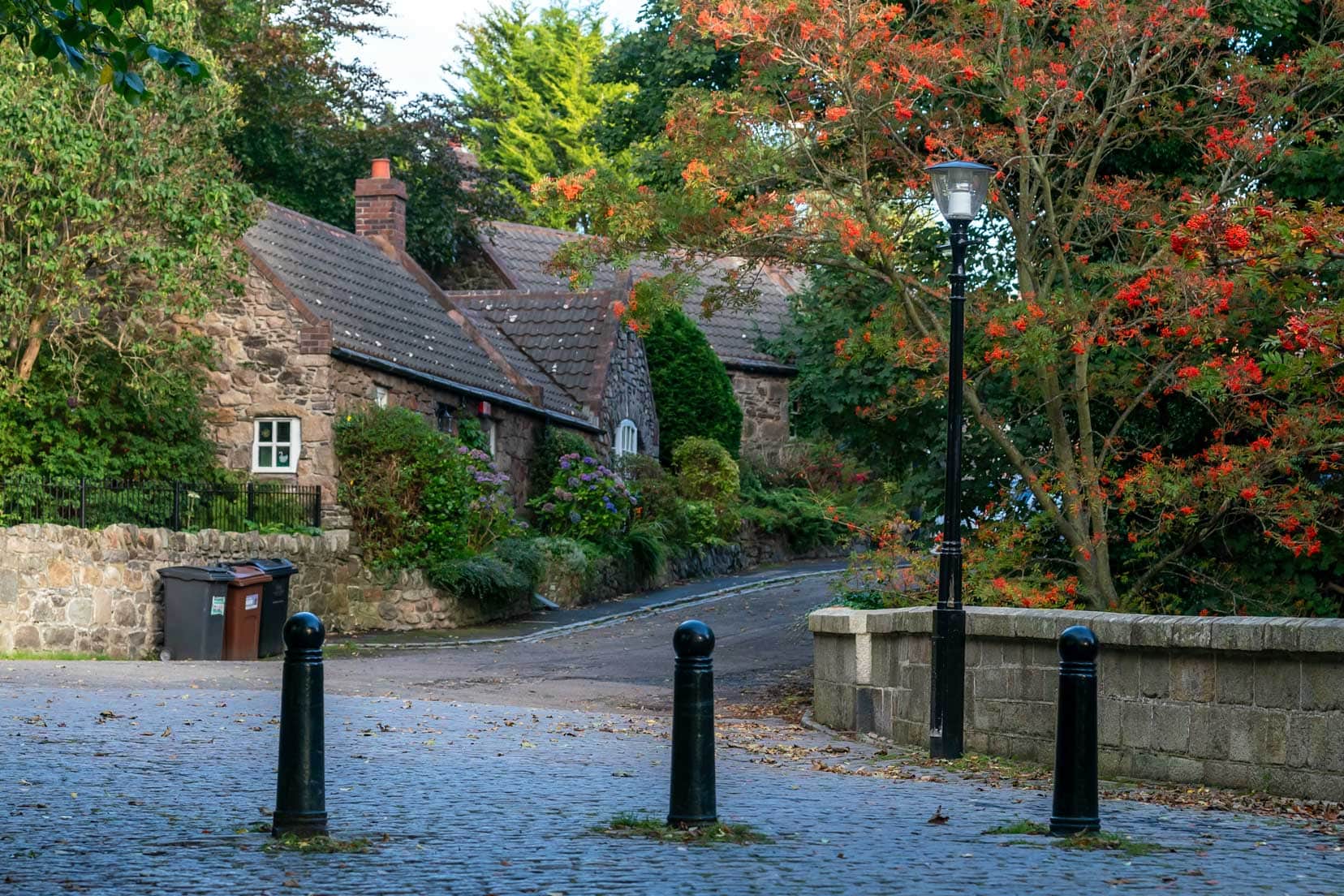
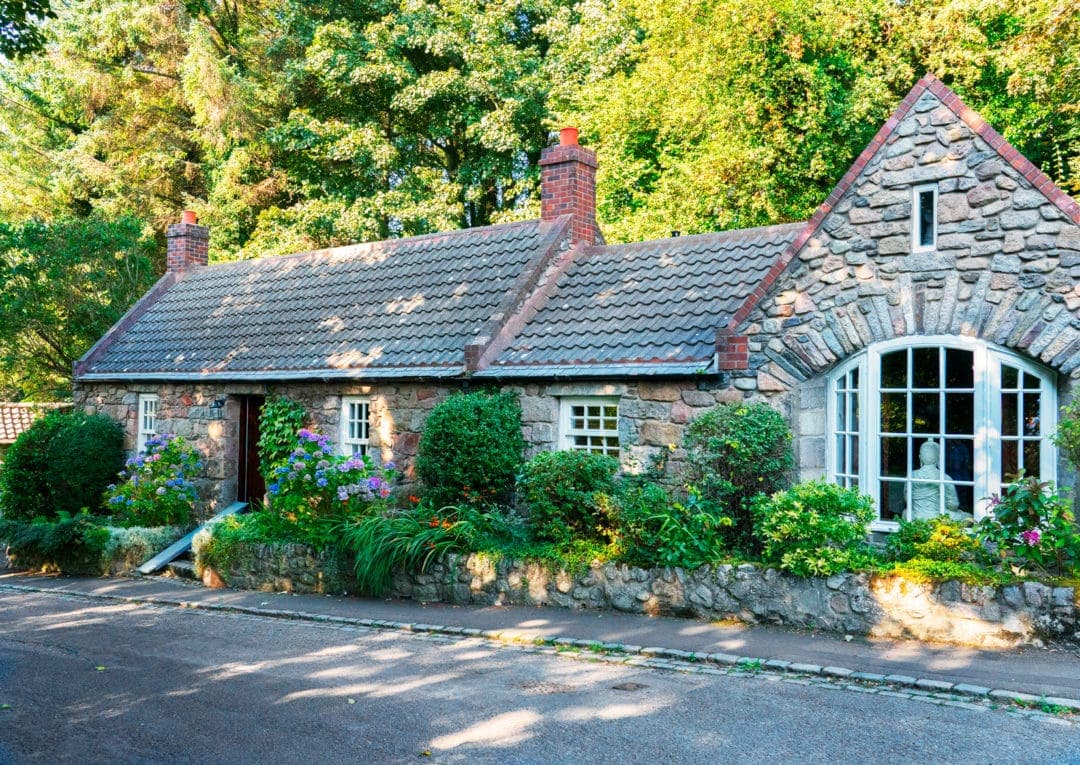
Brig O Balgownie Walk
The paths along the River Don that lead to the Brig O Balgownie are part of the Donmouth Local Nature Reserve. The Reserve starts at the mouth of the River on the shores of South and North Donmouth Beach.
You can click here for more trails in the Donmouth Nature Reserve.
Several access points to the paths leading to the Brig O Balgownie exist.
- You could drive your car, park at the Cottown of Balgownie, and then explore the bridge and its paths on foot.
- Alternatively, if on foot, you can access the paths on either side of the River Don, just past both sides of the River Don Bridge. (See the interactive map above for access points)
The paths are shaded by trees. You follow the river between the Balgownie bridge and can continue to Donmouth Beach, where the landscape changes from woodland to seascape.
Seals swim in the estuary, and the wide-open space of the ocean contrasts with Balgownie’s intimate paths.
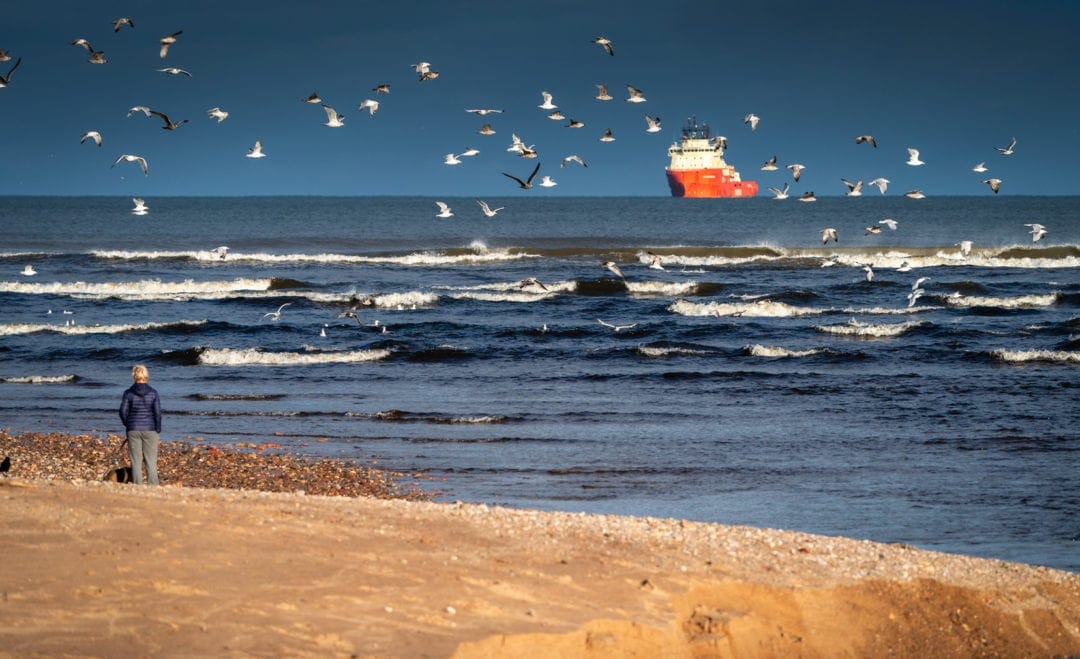
Practical Visitor Tips for Brig o’ Balgownie
- Best Time to Visit: The Brig o’ Balgownie is captivating year-round; however, autumn adds fantastic colours to the landscape.
- Optimal Viewing Locations:
- For the best views and photo opportunities of the bridge, take the trail on the southern side of the River Don.
- If you’re exploring the northern trail towards the River Don mouth, walk up to the river’s edge for unique glimpses of the bridge.
- Appropriate Footwear:
- Wear sturdy footwear, especially as the cobblestone path across the bridge and adjacent paths can be slippery when wet.
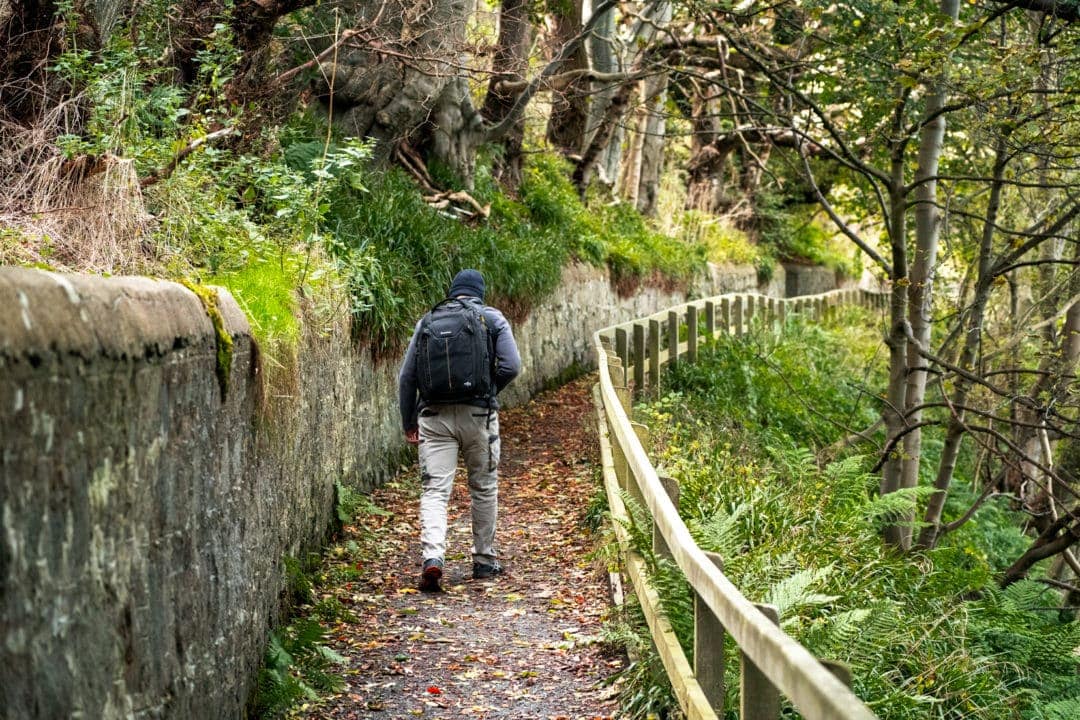
Photography Opportunities at the Brig o’ Balgownie
Whether you’re a seasoned photographer or a hobbyist, the Brig o’ Balgownie offers diverse and picturesque settings that can capture the essence of Scotland’s natural and architectural beauty.

Landscape Photography
- Best Views: The River Don’s southern side offers the best vantage points for stunning landscape shots. The northern side of the river has more restricted views of the bridge.
- Challenges: Be aware that summer foliage can obscure clear views of the bridge.
- Optimal Timing: Aim to visit early in the morning or late in the afternoon for the most flattering lighting.
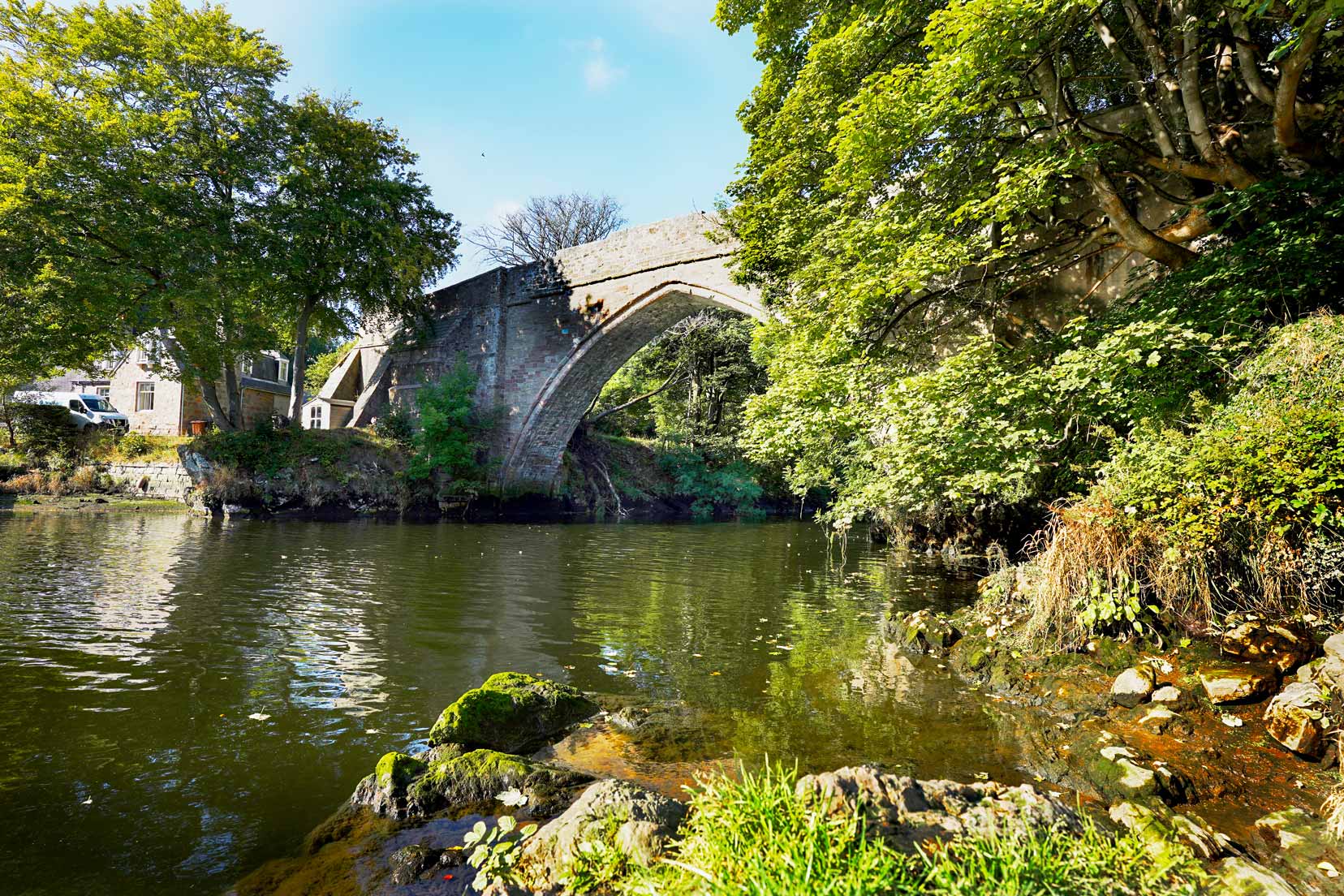
Wildlife Photography
- Hotspot for Wildlife: Venture along the trails toward the River Don’s mouth to capture a variety of wildlife.
- What to Expect: Frequently spotted are seals lounging on river sand beds, as well as herons, seagulls, and geese in their natural environment. Otters have been spotted here regularly, and we saw some deer grazing on the grass on the centre island near the bridge.
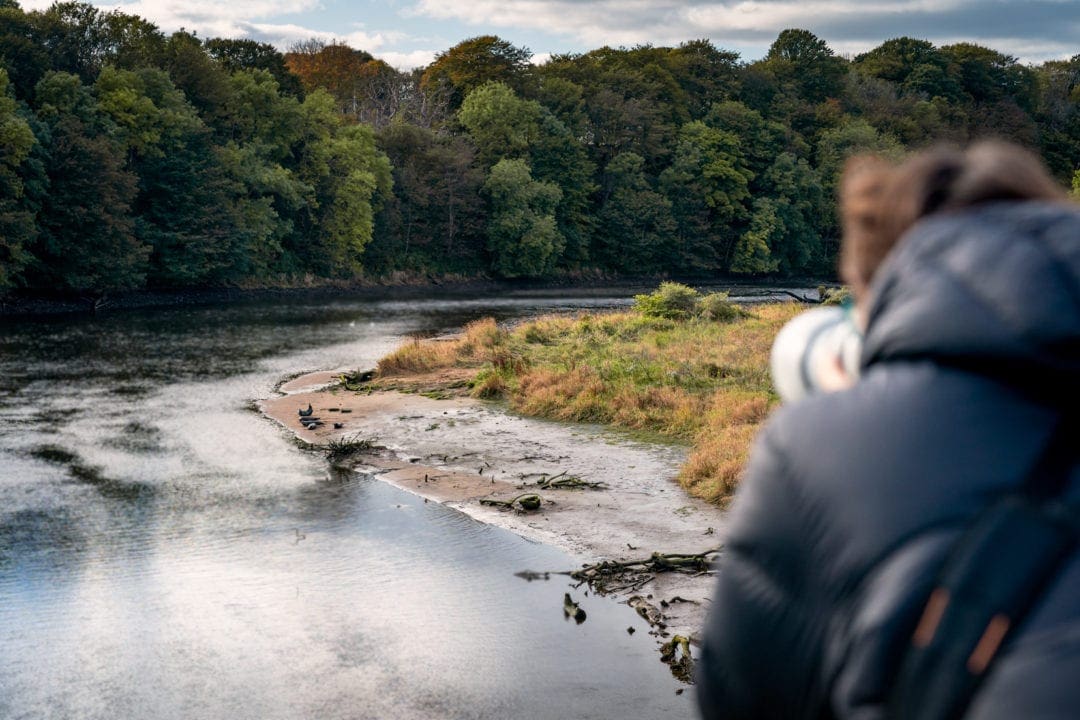
How to Get to the Brig O Balgownie
The Brig of Balgownie is in the old part of Aberdeen in Aberdeenshire, in the northeast of Scotland.
🚗 Where to Park Near the Brig O Balgownie
For convenient street parking, the Cottown of Balgownie is your closest option.
Alternatively, consider parking at Seaton Park. Not only is it a viable option, but it also offers the chance to enjoy its beautiful gardens. It’s a 0.7-mile (1.1-kilometre) walk to the Brig o’ Balgownie.
By Bus
🚌 From the city centre, take Aberdeen bus line number 1 to the Balgownie Road stop. Then, take a short 270-metre walk to the bridge.
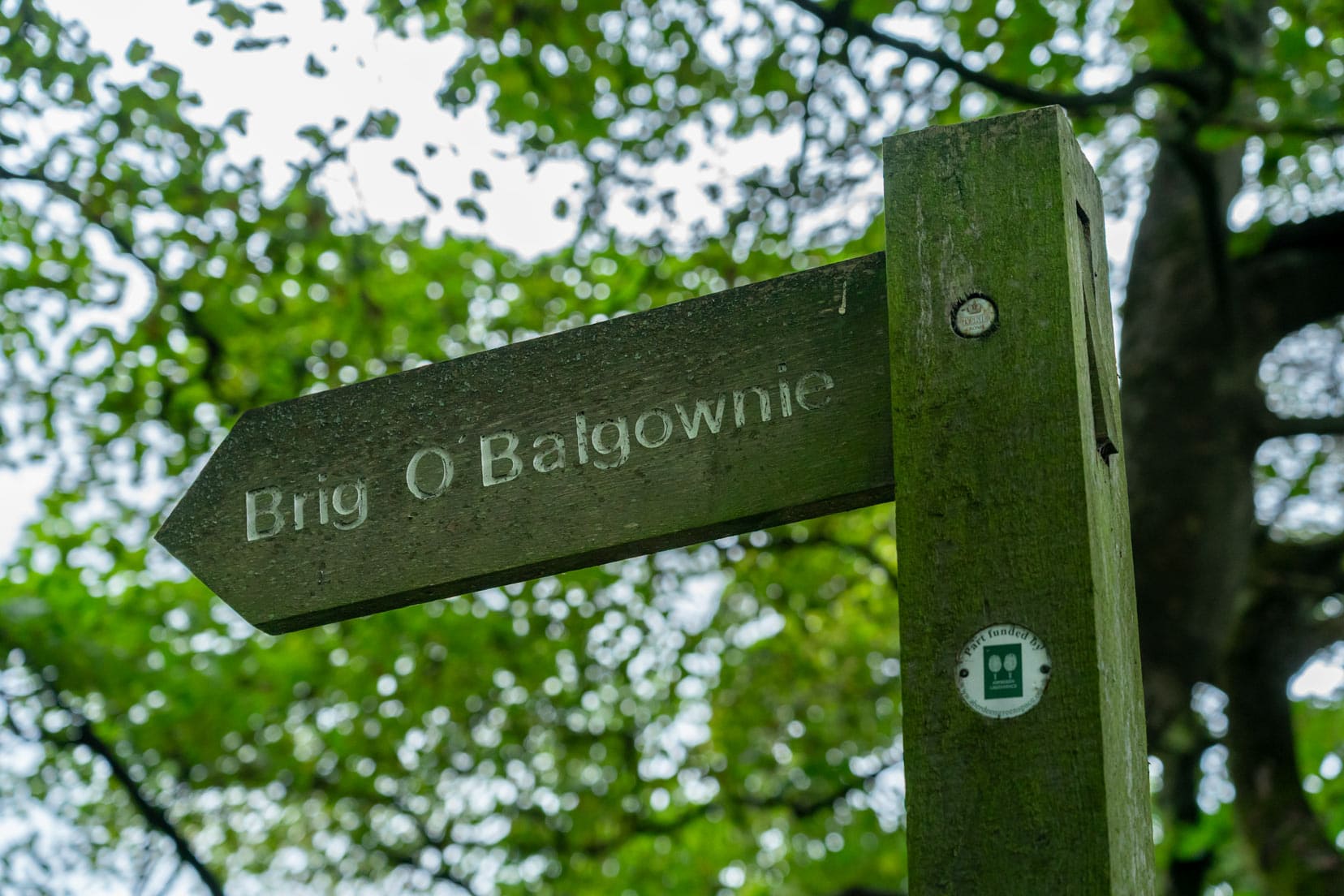
What’s Nearby Brig O’Balgownie?
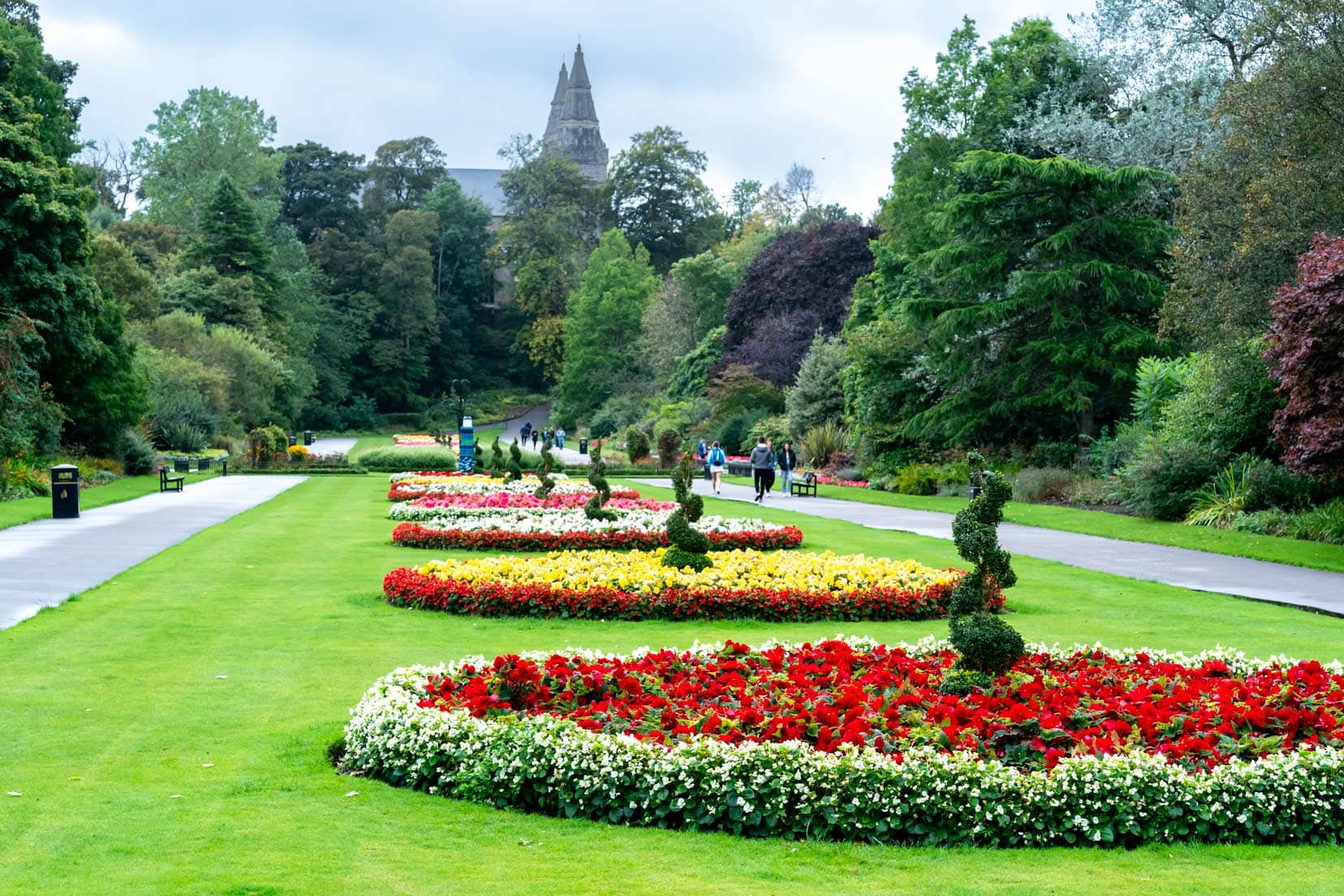
- Seaton Park
- St Machar’s Cathedral
Don’t miss visiting Seaton Park’s expansive grounds, with its manicured flower beds, towering trees, and historical finds.
Stroll the gorgeous Cathedral Walk and admire the historical buildings of St Machar’s Cathedral and Wallace Tower.
🚌 The closest bus stops to Seaton Park are from Aberdeen bus routes 20 and 25.
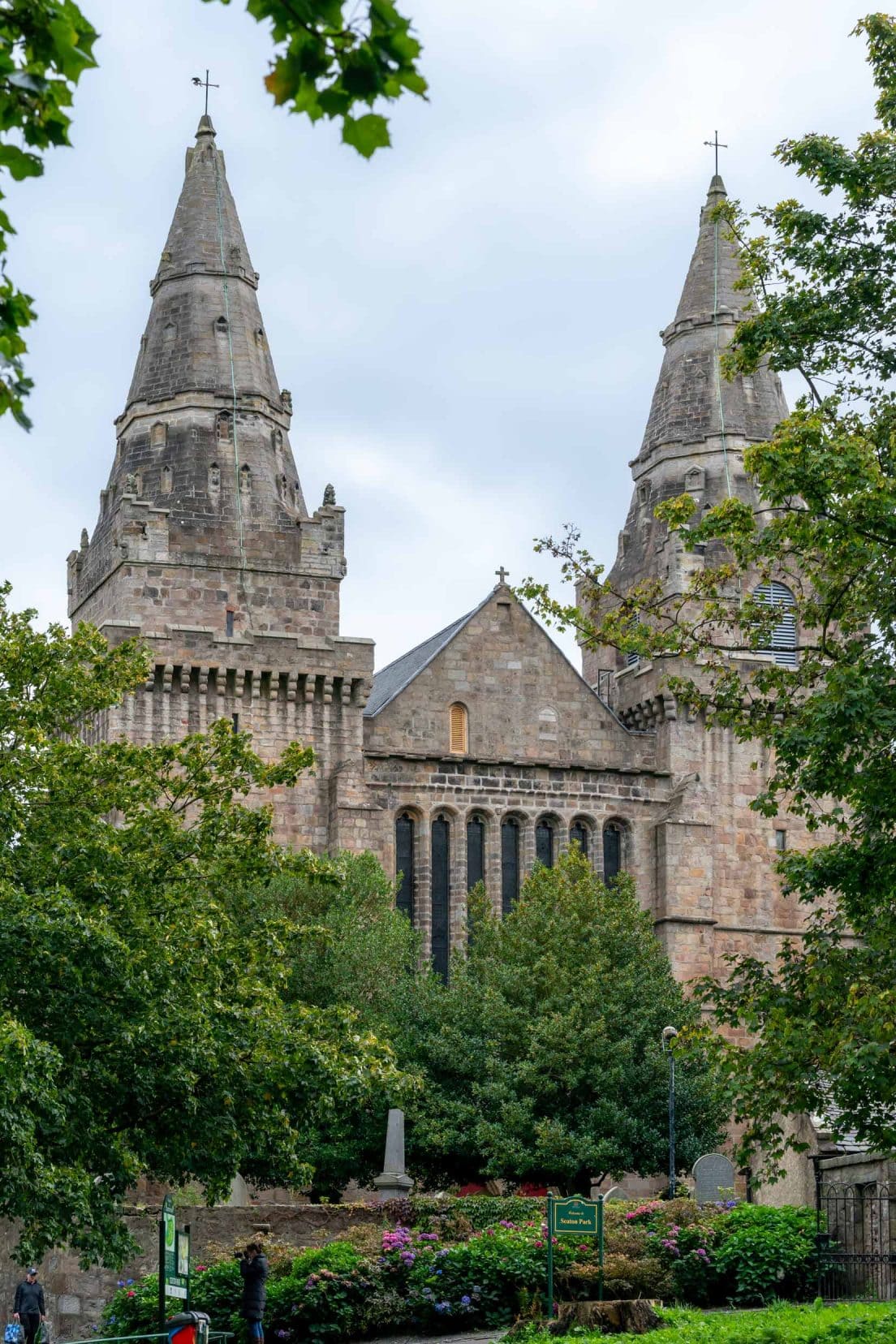
Brig o Balgownie … Time goes on
It was autumn in Aberdeen, when we visited and and golden leaves fluttered around Scotland’s oldest medieval bridge, tumbling into the black neuk below. Standing there, it was clear that the Brig o’ Balgownie has been a silent spectator to the changing seasons for over 500 years.
The bridge no longer hears the clatter of horse-drawn carts or the marching of armies defending Scotland’s shores. Instead, it now welcomes joggers, dog walkers, students, and those who pause to appreciate its enduring beauty.
One can’t help but wonder: will it still be here in another 500 years? Who will cross its cobblestones then, and what changes will it witness?
This unassuming bridge is one of many treasures in Aberdeen, yet it uniquely transports us back to nature and simpler times. The Brig o’ Balgownie isn’t just a crossing over the River Don—it’s a bridge across time itself.
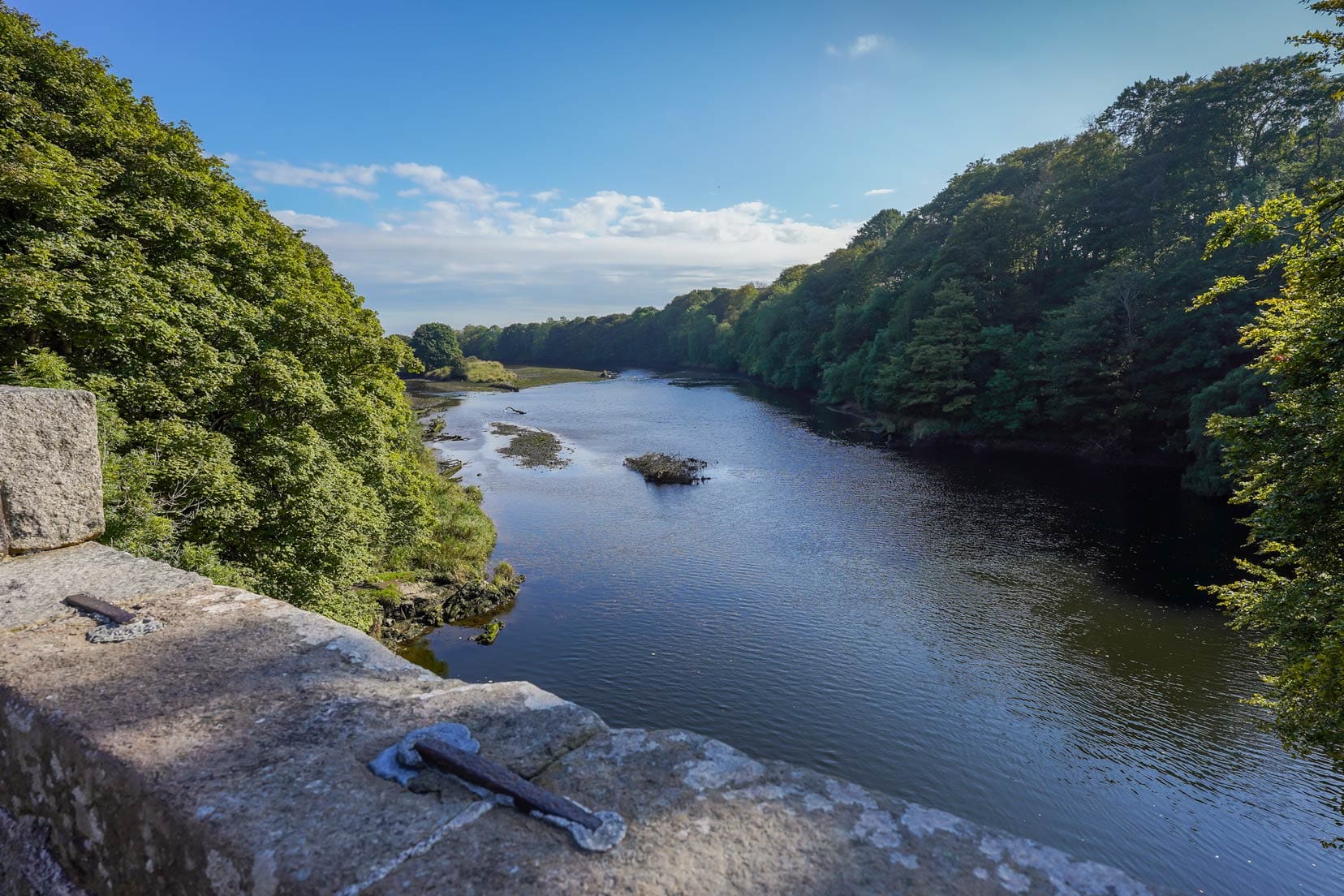
You May Also Like to Read Our Scotland Travel Guide or:
- Scotland: Stunning Stonehaven to Dunnottar Castle Walk
- Scotland: The Scottish Birks of Aberfeldy & Its Bewitching Autumnal Blaze
- Scotland: 33 Best Things to do in Aberdeenshire
- Scotland: 21 Things to do in Aberdeen
- Scotland: Visiting the Fairy Bridge of Glen Crerean and Photographic Guide
Are You Planning Your Travels?
These are the travel resources we recommend and use when planning our trips.
- 🚘 Car Hire: We use DiscoverCars.com
- Motorhome/Campervan Rental: We highly recommend the Motorhome Republic
- 🪪 Order your International Driver’s Licence online here
- 🛏 Book Accommodation: We use Booking.com to find accommodation that suits our budget
- 🐶 Pet Sitting/Pet Sitters: Check Out TrustedHousesitters here (Use our Discount code: LIFEJOURNEY25 for 25% off. )
- Activities and Experiences: Get Your Guide and Viator
- Travel Insurance: Safetywing or World Nomads
- 🥾 Travel Gear and Accessories: Check out our top picks here — Lifejourney4two page on Amazon
For a more thorough list, visit our Travel Resources page here.

